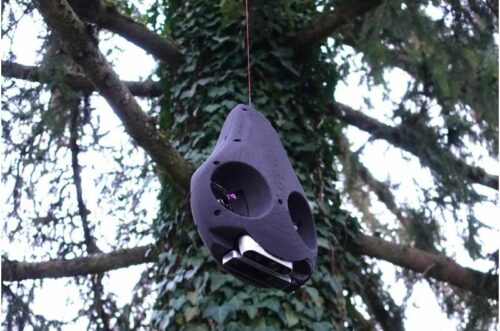The robot abseils and navigates the rainforest canopy for data collection, inspired by spiders, overcoming challenges in tree exploration.

The innovative robot Avocado, designed by Swiss National Science Foundation researchers and featuring robust housing resembling the green fruit, can abseil from heights and swing around obstacles. It is intended to autonomously manoeuvre through the rainforest canopy, a challenging habitat, to collect vital data for researchers. As one of the latest inventions in environmental robotics, Avocado combines advanced technology within its uniquely shaped structure, enabling seamless navigation through treetops.
In the tropical rainforests’ most biodiverse habitats, the dense canopy is teeming with the highest concentration of living organisms. However, exploring these areas poses significant challenges; climbing trees limits research teams to selective data collection. This environment also presents difficulties for current robotic technology. Airborne drones struggle as their rotor blades risk entanglement in the dense foliage, while the varying thicknesses and textures of branches make it a demanding terrain for climbing robots.
Like a spider on a thread
Inspired by spiders that abseil on silk threads, researchers developed this concept. In the test phase, they manually tether the robot by climbing trees. In the future, a drone might act as a transporter, delivering the robot to unreachable areas and securing it to the treetops.
Once positioned, the Avocado autonomously moves up and down using a winch hidden in its upper housing. Inside its central “bulge,” resembling the stone of an actual avocado, the robot is equipped with two rotors. These rotors provide momentum, enabling Avocado to navigate branches, foliage, and obstacles.
The robot gathers environmental data through an onboard camera, but this task is complex due to the challenging lighting conditions in treetops, where light and dark rapidly alternate. As the researchers explain, efforts are underway to enhance the camera’s ability to perceive depth even under these fluctuating conditions.
Despite these challenges, the robot has successfully navigated a pre-set indoor obstacle course and completed a test run on an actual tree.
Reference: Steffen Kirchgeorg et al, Design, Modeling, and Control of AVOCADO: A Multimodal Aerial-Tethered Robot for Tree Canopy Exploration, IEEE Transactions on Robotics (2023). DOI: 10.1109/TRO.2023.3334630







